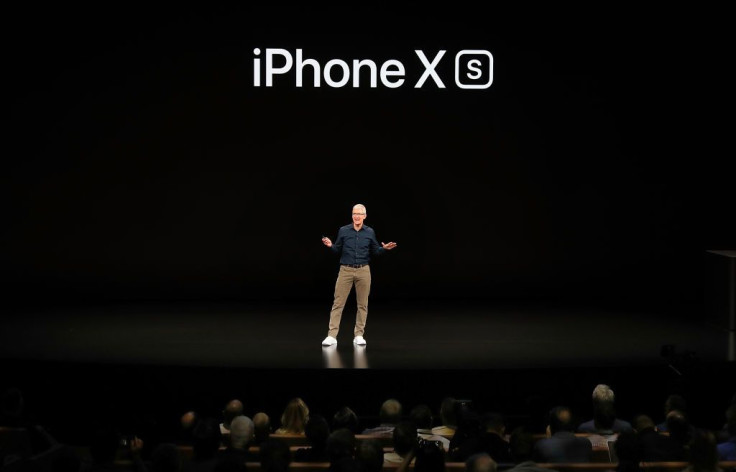No, Apple Isn't Overcharging For The iPhone

It's absolutely true that the prices of Apple's (NASDAQ:AAPL) flagship iPhones have risen dramatically with recent product launches. The iPhone X, which launched in 2017, started at $999 for the version with 64 GB of storage and went up to $1,149 for the variant with 256 GB of storage. In the fall of 2018, Apple launched both a successor to the iPhone X called the iPhone XS as well as a larger version, the iPhone XS Max. These devices start at $999 and $1,099, respectively, for the 64 GB configurations, and go all the way to $1,349 and $1,449 for the versions with 512 GB of storage.
For some perspective, Apple's iPhone 7 started at $649 and ran up to $849, while the larger iPhone 7 Plus began at $769 and went up to $969.
Apple's current iPhone pricing compared to historical iPhone pricing has led some to boil down the company's product launch strategy to something like the following quote from Bloomberg: "Apple is tackling a global smartphone industry slowdown by raising iPhone prices."
Although that's technically true -- iPhone average selling prices did rise dramatically during Apple's fiscal 2018 -- that statement misses a key aspect of the company's strategy. Allow me to explain.
Raising prices isn't so simple
The problem with simply saying that Apple is "raising iPhone prices" is that it might suggest to some that the company is simply building the same products that it would've in prior years at roughly the same cost structures and simply charging more for those products in a bid to inflate revenue.
In such a scenario, Apple would indeed be boosting its iPhone average selling prices but the value that it would be delivering to consumers would be dramatically lower, potentially driving unit demand for these iPhones down.
However, it's clear that this isn't what's happening here. Take the iPhone X, for example. This phone was significantly different -- and more advanced -- than either the iPhone 8 or the iPhone 8 Plus that launched alongside it. iPhone X incorporated a pricey organic light-emitting diode (OLED) screen while the iPhone 8 and iPhone 8 Plus used cheaper LCDs. iPhone X also had a more advanced camera subsystem than the other two phones.
The iPhone X also featured a stainless-steel construction while the iPhone 8 and iPhone 8 Plus had cheaper aluminum constructions. Oh, and lest we forget, the iPhone X incorporated Apple's TrueDepth camera system for 3D-sensing applications like Face ID, while the iPhone 8 and iPhone 8 Plus used simpler fingerprint scanners.
Each of those enhancements adds to the manufacturing costs of Apple's more advanced smartphones.
Some financial evidence
The best piece of evidence supporting the notion that Apple's iPhone prices have been rising in conjunction with its cost structure is the company's gross margin in fiscal 2018 -- the year in which Apple introduced its expensive iPhone X -- compared to that in fiscal 2017. Gross margin, as you may known, is calculated by taking total revenue, subtracting the cost of that revenue, and then dividing that value by total revenue.
As a simple example, if I sell a widget for $50 that cost me $25 to make, my gross margin on that sale is 50%.
Turning to Apple, during its fiscal 2017, it reported a gross margin of 38.5%. In fiscal 2018, the company's total gross margin was 38.3% -- down 2 basis points from the year prior.
At the same time, Apple saw its iPhone revenue rise from $141.32 billion in fiscal 2017 to $166.7 billion in fiscal 2018, and that revenue growth was due almost entirely to a rise in iPhone average selling prices since unit shipments were flat in 2018 relative to what they were in 2017. Putting some numbers to it, Apple's iPhone average selling price in fiscal 2017 was about $652, while that figure was $766 in fiscal 2018.
So riddle me this: If Apple simply jacked up iPhone prices without incurring a commensurate increase in cost structure, why didn't the company enjoy massive surge in gross margin, particularly considering that iPhone sales made up 61.6% and 62.8% of the company's revenue in fiscal years 2017 and 2018, respectively?
The answer is simple: Apple's selling pricier iPhones because those iPhones simply cost more to make.
This article originally appeared in the Motley Fool.
Ashraf Eassa has no position in any of the stocks mentioned. The Motley Fool owns shares of and recommends Apple. The Motley Fool has the following options: long January 2020 $150 calls on Apple and short January 2020 $155 calls on Apple. The Motley Fool has a disclosure policy.





















